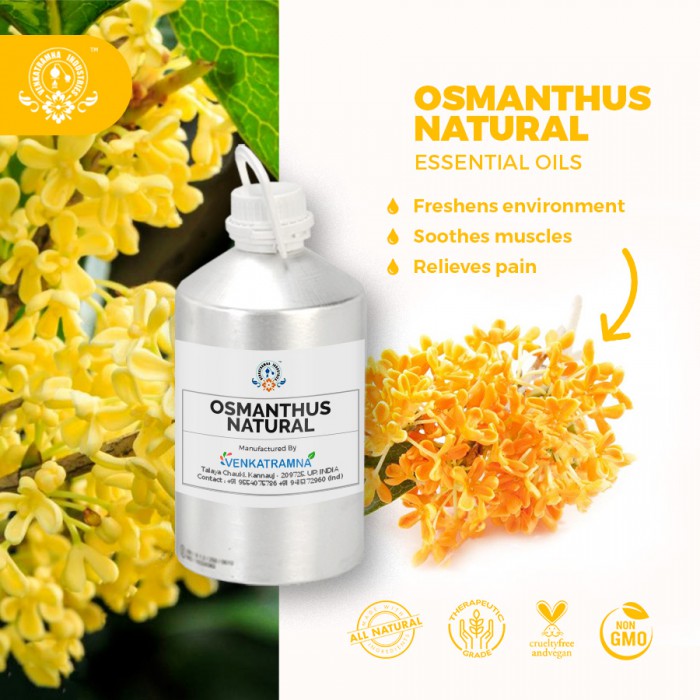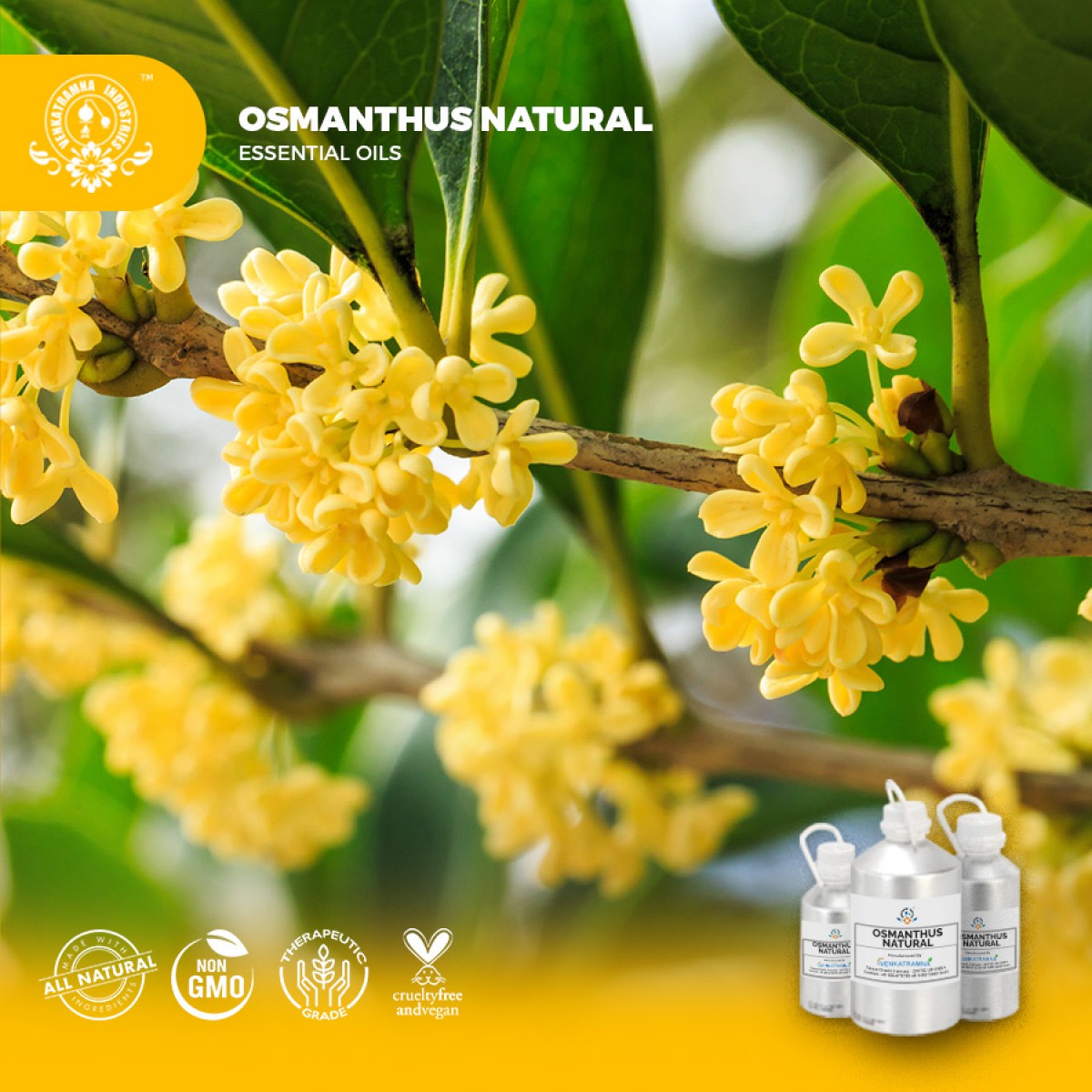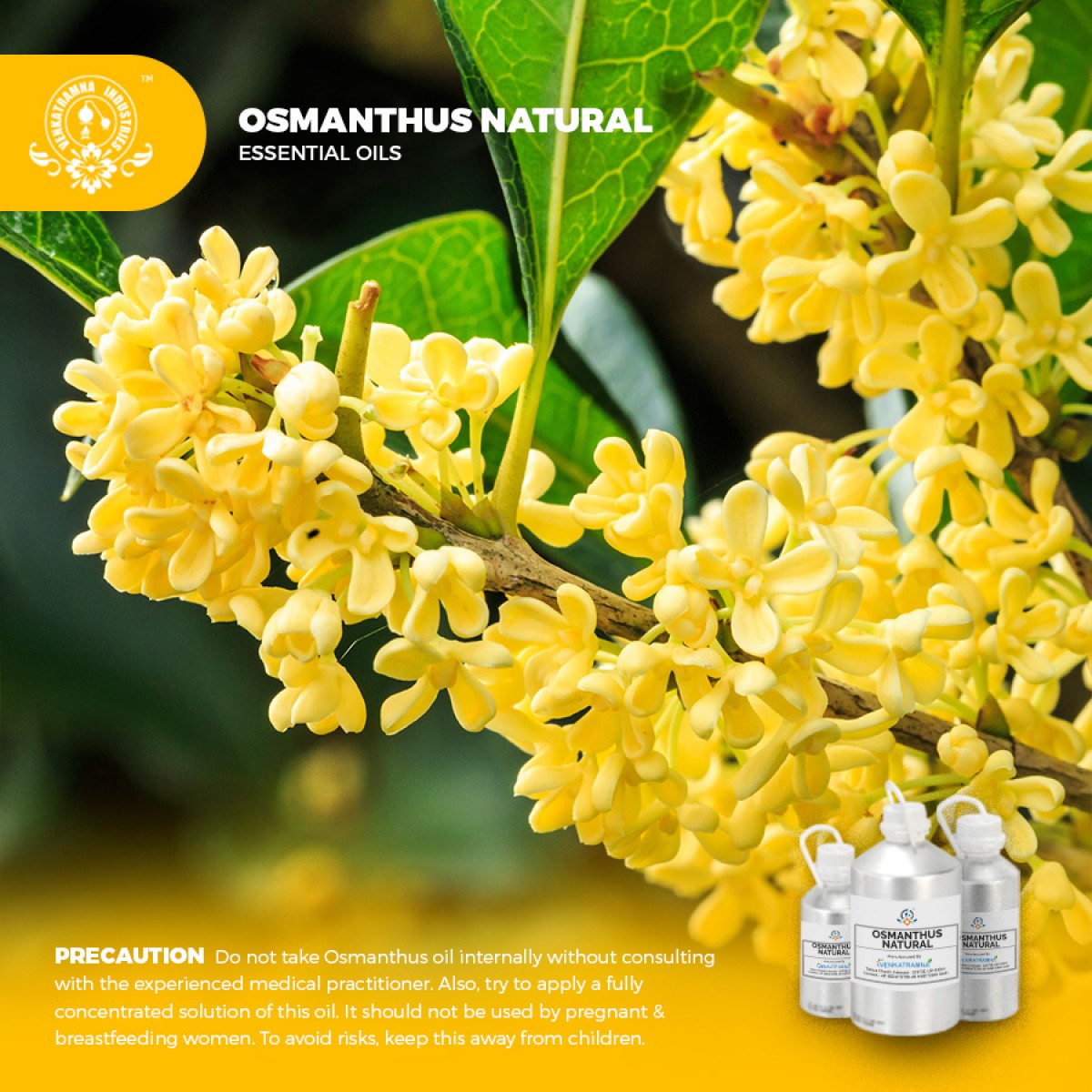Botanical Name: Osmanthus Fragrans Lour Common name: Fragrant Olive, Read More
|
Botanical Name: |
Osmanthus Fragrans
Lour |
|
Common name: |
Fragrant Olive, |
|
Plant
family: |
Oleaceae |
|
Genus: |
Osmanthus |
|
Appearance/Color: |
A thin to medium
liquid having yellowish to golden brown color. |
|
Odor: |
leathery, woody,
animalic, spicy and strong aroma |
|
Blends With: |
Vanilla
Absolute, Amyris, Rose Otto (Bulgarian), Orange Sweet, Lemon, Spikenard Wild
Crafted, Opoponax Wild Crafted, Helichrysum Wild Crafted (Italicum), Lime and
Mandarin Red. |
|
Origin: |
China |
|
Source: |
Flowers |
|
Method
of Extraction: |
Solvent
Extraction |
Osmanthus fragrans, also known as sweet olive or fragrant olive, is one of the most famous flowers in China due to attractive color and strong fragrance. It produces clusters of not particularly showy flowers that have an extremely powerful apricot fragrance. It is a small, upright, evergreen tree or large shrub that will typically grow to 10-15’ tall in cultivation but may reach 20-30’ tall in its native habitat in Asia (Himalayas, China and Japan). It must be grown in containers in the St. Louis area. Features oval, leathery, glossy green leaves (to 4” long). Leaf margins may be smooth or finely toothed. Tiny white flowers appear in axillary clusters in spring, with some sporadic bloom through the summer into fall. Varieties of the species bear flowers in orange, gold and reddish hues. The plant has very fragrant flower. In China, flowers are sometimes added to teas.
DISCLAIMER
The complete range of conditions
or methods of use are beyond our control therefore we do not assume any
responsibility and expressly disclaim any liability for any use of this
product. Information contained herein is believed to be true and accurate however,
all statements or suggestions are made without warranty, expressed or implied,
regarding accuracy of the information, the hazards connected with the use of
the material or the results to be obtained from the use thereof. Compliance
with all applicable federal, state, and local laws and local regulations
remains the responsibility of the user.
The FDA has not evaluated the
statements on this website. No claims are made by Venkatramna Industries as to
the medicinal value of any products from vriaroma.com or by us. The information
presented here is for educating our customers about the traditional uses of
essential oils and is not intended to diagnose, treat, cure, or prevent any
disease. You are responsible for understanding the safe application of these products.
If you have any questions, please call or email us for further information.
As per NAHA guidelines, New Directions Aromatics
(NDA) does not recommend the ingestion of essential oils. It is imperative to
consult a medical practitioner before using Essential Oils for therapeutic
purposes. Pregnant and nursing women and those taking prescription drugs are
especially advised not to use this product without the medical advice of a
physician. The oil should always be stored in an area that is inaccessible to
children, especially those under the age of 7.
Fragrant olive is an evergreen
tree or shrub with strongly scented flowers. It is cultivated as an ornamental
and has a long history of use in traditional herbal medicine and flavoring tea
and confectionery. Osmanthus
fragrans flowers
have been used as folk medicine for a long time in the treatment of rheumatism,
cough and stomachache. Extracts of Osmanthus fragrans flowers
have been reported to exhibit various bioactivities both in vitro and in vivo.
The generic
name Osmanthus comes from the Greek osma, meaning fragrant,
and anthos, meaning flower. Osmanthus fragrans certainly lives
up to this name, having exquisitely scented flowers. It has been
cultivated in China for about 2,500 years, and is still of importance there
today, the flowers being widely used to flavour tea, wine and sweets, as well
as an ingredient in herbal medicine. The city of Guilin (meaning 'forest of
sweet osmanthus') is named after the numerous Osmanthus trees there.
It is a popular street tree throughout the warmer parts of China, filling the
air with scent on warm autumn evenings.
Osmanthus fragrans has
a long history of use in herbal medicine and is used in perfumery and as a
flavoring. The flowers are used to make a scented jam and tea (hence its common
name, tea olive), and in traditional herbal medicine a decoction of the stem
bark is used to treat boils and carbuncles. The essential oil has
insect-repelling properties. Essential
oil is the volatile oil extracted from plants with strong aromatic components
and distinctive odor, which has been widely used as a major raw material of
perfume or cosmetic. The essential oil is an excellent source of bioactive
compounds and exhibits various activities such as antioxidant and antimicrobial
effects.
COMMON
USAGE
·
Soothes muscles
·
Relieves pain
·
Freshens environment
·
Acts as best antioxidant
·
Improves blood circulation
·
Best as digestive aids
·
Reduces stress & anxiety
·
Acts as detoxifying agent
·
Treats Stomachic
·
Stimulates sexual desires
·
Reduces infections & allergies
Ingredients:
|
S.No |
Key Constituents |
Strength (%) |
|
1 |
Osmanthus Absolute |
87.8 |
|
2 |
Citral |
0.5 |
|
3 |
Citronellol |
0.1 |
|
4 |
Eugenol |
2.0 |
|
5 |
Isoeugenol |
3.0 |
|
6 |
Benzyl Salicylate |
2.0 |
|
7 |
Benzyl Alcohol |
0.5 |
|
8 |
Geraniol |
2.0 |
|
9 |
Linalool |
2.0 |
|
10 |
Limonene |
0.1 |
Safety Summary
·
Hazards: Not Known
Organ Specific Effects
·
Acute toxicity: No Data Available
·
Skin corrosion/irritation: May be
irritating to skin.
·
Serious eye damage/irritation: No Data
available.
·
Germ cell mutagenicity: Not specified
·
Carcinogenicity: No Data Available.
·
Reproductive toxicity: Not specified
·
STOT-single exposure: Not specified
·
STOT-related exposure: Not specified
·
Aspiration hazard: Not specified
·
Information on the likely routes of exposure:
Skin/scalp contact.
·
Symptoms related to the physical, chemical,
and toxicological characteristics: None known. Irritation of the eye if
exposed: Redness of the skin if irritated.
·
Toxicity
o
Acute fish toxicity: LC50 / 96 HOUR – No data
available
o
Toxicity to aquatic plants – No data available
o
Toxicity to microorganisms – No data available
o
Toxicity threshold – No data available
·
Persistence and degradability:
Biodegradation is expected
·
Bio-accumulative potential:
Bioaccumulation is unlikely
·
Mobility in soil: Unknown
Avoid exposure to marine environments and waterways





 PS-Osmanthus.pdf
PS-Osmanthus.pdf




